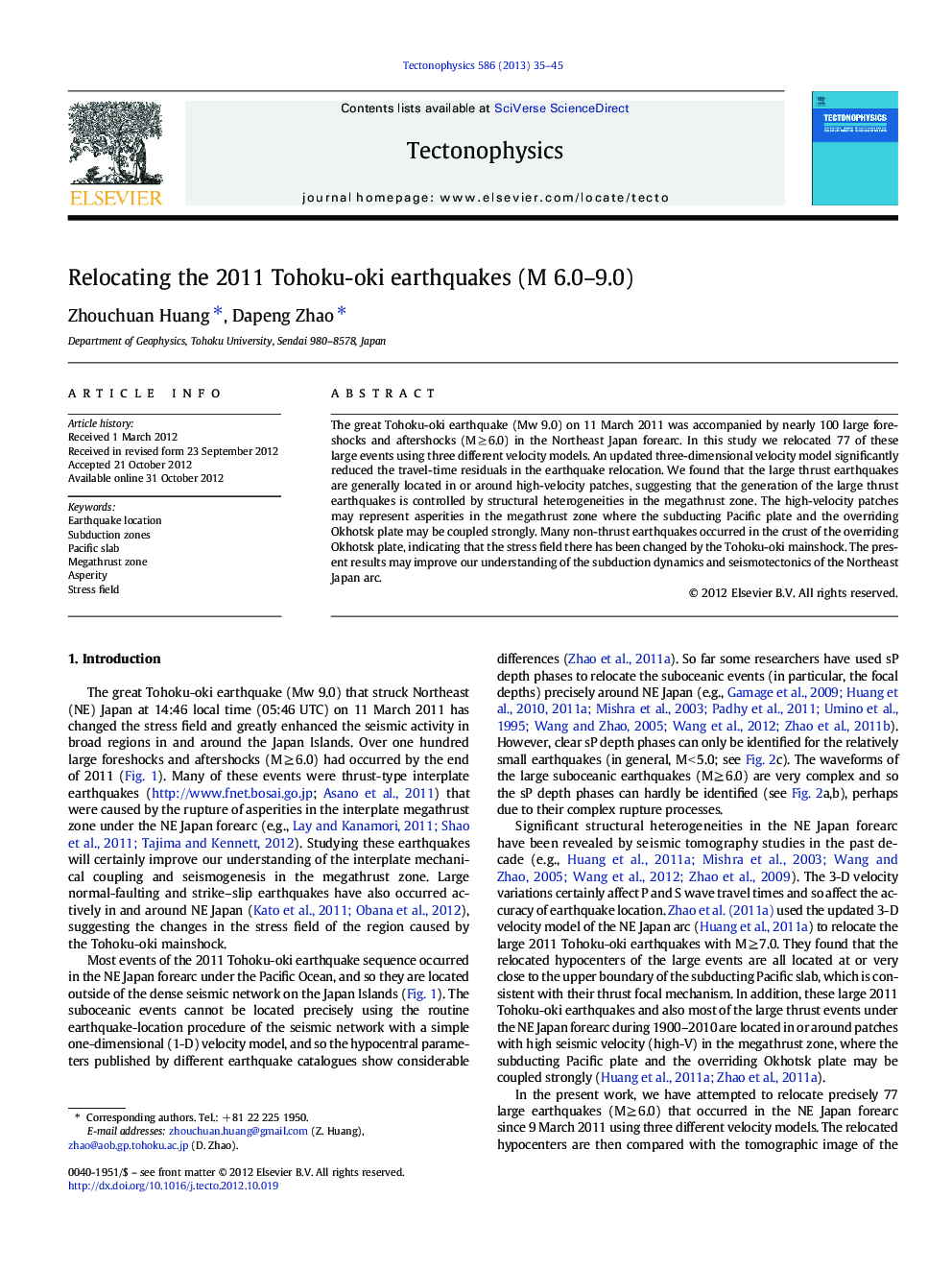| Article ID | Journal | Published Year | Pages | File Type |
|---|---|---|---|---|
| 4692462 | Tectonophysics | 2013 | 11 Pages |
The great Tohoku-oki earthquake (Mw 9.0) on 11 March 2011 was accompanied by nearly 100 large foreshocks and aftershocks (M ≥ 6.0) in the Northeast Japan forearc. In this study we relocated 77 of these large events using three different velocity models. An updated three-dimensional velocity model significantly reduced the travel-time residuals in the earthquake relocation. We found that the large thrust earthquakes are generally located in or around high-velocity patches, suggesting that the generation of the large thrust earthquakes is controlled by structural heterogeneities in the megathrust zone. The high-velocity patches may represent asperities in the megathrust zone where the subducting Pacific plate and the overriding Okhotsk plate may be coupled strongly. Many non-thrust earthquakes occurred in the crust of the overriding Okhotsk plate, indicating that the stress field there has been changed by the Tohoku-oki mainshock. The present results may improve our understanding of the subduction dynamics and seismotectonics of the Northeast Japan arc.
► The 2011 Tohoku-oki earthquakes are better located with a 3-D velocity model. ► Structural heterogeneities in the megathrust zone affect the earthquake generation. ► The Mw 9.0 thrust event changed the stress field and induced many normal and strike-slip earthquakes.
